Debes estar logueado
-
WróćX
-
Componentes
-
-
Category
-
Semiconductores
- Diodos
- Tiristores
-
Módulos con aislamiento eléctrico
- Módulos con aislamiento eléctrico | VISHAY (IR)
- Módulos con aislamiento eléctrico | INFINEON (EUPEC)
- Módulos con aislamiento eléctrico | Semikron
- Módulos con aislamiento eléctrico | POWEREX
- Módulos con aislamiento eléctrico | IXYS
- Módulos con aislamiento eléctrico | POSEICO
- Módulos con aislamiento eléctrico | ABB
- Módulos con aislamiento eléctrico | TECHSEM
- Przejdź do podkategorii
- Rectificadores de puente
-
Transistores
- Transistores | GeneSiC
- Módulos SiC MOSFET | Mitsubishi
- Módulos SiC MOSFET | STARPOWER
- Módulos ABB SiC MOSFET
- Módulos IGBT | MITSUBISHI
- Módulos de transistores | MITSUBISHI
- Módulos MOSFET | MITSUBISHI
- Módulos de transistores | ABB
- Módulos IGBT | POWEREX
- Módulos IGBT | INFINEON (EUPEC)
- Elementos semiconductores de carburo de silicio (SiC)
- Przejdź do podkategorii
- Controladores de puerta
- Bloques de energía
- Przejdź do podkategorii
- Convertidores de corriente y tensión LEM
-
Componentes pasivos (condensadores, resistencias, fusibles, filtros)
- Resistencias
-
Fusibles
- Fusibles miniatura para circuitos electrónicos, serie ABC y AGC
- Fusibles tubulares de acción rápida
- Eslabones fusibles de retardo de tiempo con características GL / GG y AM
- Eslabones fusibles ultrarrápidos
- Fusibles de acción rápida (estándar británico y estadounidense)
- Fusibles de acción rápida (estándar europeo)
- Fusibles de tracción
- Eslabones fusibles de alto voltaje
- Przejdź do podkategorii
-
Condensadores
- Condensadores de motor
- Condensadores electrolíticos
- Condensadores de película
- Condensadores de potencia
- Condensadores para circuitos de CC
- Condensadores de corrección del factor de potencia
- Condensadores de alto voltaje
- Condensadores de calentamiento por inducción
- Condensadores de almacenamiento de energía y pulsos
- Condensadores de ENLACE CC
- Condensadores para circuitos AC/DC
- Przejdź do podkategorii
- Filtros EMI
- Supercondensadores
- Protección contra sobretensiones
- Filtros para detección de emisiones TEMPEST
- Pararrayos
- Przejdź do podkategorii
-
Relés y contactores
- Teoría de relés y contactores
- Relés semiconductores de CA trifásicos
- Relés semiconductores de CA trifásicos
- Reguladores, controles y accesorios
- Arranques suaves y contactores de inversión
- Relés electromecánicos
- Contactores
- Interruptores giratorios
-
Relés semiconductores de CA monofásicos
- Relés semiconductores CA monofásicos, serie 1 | D2425 | D2450
- Relés semiconductores CA monofásicos, series CWA y CWD
- Relés semiconductores CA monofásicos de las series CMRA y CMRD
- Relés semiconductores de CA monofásicos, serie PS
- Relés semiconductores de CA dobles y cuádruples, serie D24 D, TD24 Q, H12D48 D
- Relés de estado sólido monofásicos, serie gn
- Relés semiconductores de ca monofásicos, serie ckr
- Relés AC monofásicos SERIE ERDA Y ERAA para carril DIN
- Relés AC monofásicos para corriente 150A
- Relés dobles de estado sólido integrados con disipador de calor para carril DIN
- Przejdź do podkategorii
- Relés semiconductores CA monofásicos para PCB
- Relés de interfaz
- Przejdź do podkategorii
- Núcleos y otros componentes inductivos
- Radiadores, varistores, protecciones térmicas
- Aficionados
- Aire Acondicionado, Accesorios para Armarios Eléctricos, Neveras
-
Baterías, cargadores, fuentes de alimentación de búfer e inversores
- Baterías, cargadores - descripción teórica
- Baterías de iones de litio. Baterías personalizadas. Sistema de gestión de batería (BMS)
- Pilas
- Cargadores de baterías y accesorios
- Fuente de alimentación de respaldo de UPS y fuentes de alimentación de búfer
- Convertidores y accesorios para fotovoltaica
- Almacen de energia
- Celdas de combustible
- Baterías de iones de litio
- Przejdź do podkategorii
-
Automaticas
- Elevadores Spiralift
- Piezas para drones Futaba
- Finales de carrera, microinterruptores
- Sensores, transductores
- Pirometría
- Contadores, temporizadores, medidores de panel
- Dispositivos de protección industrial
- Señalización luminosa y sonora
- Cámara termográfica
- Pantallas LED
- Botones e interruptores
- Przejdź do podkategorii
-
Cables, alambres Litz, conductos, conexiones flexibles
- alambres
- Pasamuros y acopladores de cables
- cables Litz
-
Cables para aplicaciones especiales
- Los cables de extensión y compensación
- Cables para termopares
- Los cables de conexión a PT czyjnków
- Multicore cables temp. -60 ° C a + 1400 ° C
- cables de media tensión SILICOUL
- ignición alambres
- Los cables calefactores
- temp núcleo único. -60 ° C a + 450 ° C
- conductores de trenes
- El calentamiento de los cables en el Ex
- Przejdź do podkategorii
- camisas
-
trenzas
- trenzas planas
- trenzas ronda
- trenza muy flexible - plana
- trenza muy flexible - Ronda
- Copper cilíndrico trenzado
- Copper protector de la trenza y cilíndrica
- cintas de conexión flexibles
- Trenzas cilíndrico galvanizado y acero inoxidable
- Aislamiento de PVC trenzas de cobre - Temperatura 85 ° C
- aluminio trenzado plano
- Kit de conexión - trenzas y tubos
- Przejdź do podkategorii
- Accesorios para la tracción
- Terminales de cable
- barras flexibles aisladas
- carril flexible multicapa
- sistemas de gestión de cables
- Przejdź do podkategorii
- Zobacz wszystkie kategorie
-
Semiconductores
-
-
- Suppliers
-
Applications
- Accionamientos de CA y CC (inversores)
- Automatización HVAC
- Automatización industrial
- Automatización industrial
- Calentamiento por inducción
- Componentes para atmósferas potencialmente explosivas (EX)
- Dispositivos de protección industrial
- Energy bank
- Equipos para Armarios de Distribución, Control y Telecomunicaciones
- Fuentes de alimentación (UPS) y sistemas rectificadores
- Impresión
- Máquinas de soldar y máquinas de soldar
- Máquinas herramientas CNC
- Máquinas para secar y procesar madera
- Máquinas para termoformado de plásticos
- Medición y regulación de temperatura
- Medición y regulación de temperatura
- Minería, metalurgia y fundación
- Motores y transformadores
- Tracción de tranvía y ferrocarril
-
Instalación
-
-
Inductores
-
-
Dispositivos de inducción
-
-
Servicio
-
- Contact
- Zobacz wszystkie kategorie
Wireless communication

Technological development in the whole history has never been progressing as quickly - practically every area of our life has been transformed in the last several decades and is continuously going through evolution, with which we most often can’t keep up, and also usually don’t notice it because all these changes naturally become a part of our lives.
Wireless communication is rapidly replacing cable technology and becoming a basic method of communication in daily life, production workshops, services and commercial sectors.
How does wireless communication (Wi-Fi) work?
Wireless communication technology, also called Wi-Fi, is currently one of the most popular connection methods. This type of technology transfers data not through a cable, but through electromagnetic waves such as radio waves, infrared light or satellite signals. This method, although it can do the same tasks as cable communication, provides extra mobility, simplicity of usage and saving time and money while installing the system. Wireless communication is also especially useful in emergency situations or in remote work.
Wireless communication allows for:
- data transmission in distance of several (e.g. TV remote control) to numerous thousands of km (e.g. radio communication;
- application in mobile phones (3G/4G), wireless internet, smart homes (e.g. door lock, opening garage), GPS, headphones, etc.;
- application in communication systems between vehicles (V2V), identification systems with sensors and radio identification (RFID), and also in air and sea transport.
Types of wireless networks
There are special standards of using wireless communication, and is divided into four categories:
- Wireless Personal Area Network, WPAN,
- Wireless Local Area Network, WLAN,
- Wireless Metropolitan Area Network, WMAN,
- Wireless Wide Area Network, WWAN.
Application of wireless technology
Mobile technology
Mobile network technology is called WWAN - providing connectivity on huge distances of cities and countries. Mobile phones use satellite systems such as: 2G; Long Term Evolution (LTE); GSM, CDMA 2000, CDPD and Mobitex.
Third generation systems (3G) are so-called Universal Mobile Telecommunication System (UMTS) - allow for access to the internet, data, multimedia, etc. There is also generation 3.5 and 3.75, including High Speed Downlink Packet Access (HSDPA) and High Speed Uplink Packet Access (HSUPA) - HSDPA allows for 2 Mb/s data download speed, and HSUPA 1,45 Mb/s.
Fourth generation (4G) provides broadband connection with the internet e.g. thanks to wireless modems. The speed of data download reaches from 100 Mb/s to 1 Gb/s, and sending to 60 Mb/s.
NFC (Near Field Communication)
Current NFC devices are commonly used in contactless payments and social media (for sharing contacts, pictures, videos and files). Near Field Communication (NFC) is short distance connection technology, which allows for communication between devices after direct contact. NFC works with a frequency of 13,56 MHz and provides data transmission up to 424 kb/s at a distance of about 10 cm. This type of technology is present in modern models of smartphones, tablets and other devices, and provides safety after contacting proper devices with each other and which are able to use this type of communication.
RFID technology
Radio identification (RFID) is short-distance, automatic and contactless, which uses radio electromagnetic fields to receive and read information of a given object from data saved on an identifier. RFID technology is commonly used for following and identifying resources and devices though an antenna. RFID range is from 1 to 12 meters, and speed of 640 kb/s.
Bluetooth
Bluetooth's connection uses WPAN technology - wireless transfer of data for short distances. This type of technology for years has been commonly used in mobile phones, headphones, computers, laptops, GPS, and car radios. Bluetooth uses a radio system and is intended for short-distance connection.
Zigbee technology
It is a wireless network with small power, intended for sending data of low speed and short distance. It is usually used in small digital radio transmitters in home automatics, sensors, medical devices, control systems e.g. light systems and home safety measures, etc. There is also a ZigBee version - ZigBee PRO protocol, which provides additional possibilities e.g. roads, jumps in network, maximum number of devices and network safety.
Z-Wave (WPAN) technology
It is a wireless technology working in radio frequencies - guarantees the possibility of controlling home automatics through a smartphone and managing communication between smart devices e.g. light control, locks and thermostats.
Wi-Fi (WLAN)
It is a local wireless network technology, using radio waves. Provides fast internet connection and access to it from any location e.g. public places, private institutions, homes, etc. Wi-Fi allows for connecting to the network to many devices at the same time, such as computers, phones, printers. It can be easily configured or extended through extra radio Wi-Fi cards for other devices. Benefits of Wi-Fi are lack of cables, lower costs and mobility.
LoRa (LPWAN) and Sigfox (LPWAN) technology
LoRa is a protocol of LoRaWAN - it provides long-distance connection and can be used in the creation of LoT. It is a wireless technology of transferring data with small speed for big distances - most often used in industrial sectors, research and medical fields, to provide big range communication between remote sensors connected to the network. LoRa is especially useful for smart measurements, monitoring inventory, vending machines, and automotive.
Sigfox technology is similar to LoRa, but it’s closed network. Sigfox is a wireless connection with a low power intake, also used in IoT.
World without wireless communication - why can't we live without it?
Today, almost all of us have a phone, radio, TV or tablet and on a daily basis uses multimedia and services available thanks to the wireless connection to the Internet. Each day millions of voicemails, videos, photos, data and more are sent from device to device or shared online.
Due to the rapidly increasing need for wireless connection, wireless communication systems are still developing, and today we can distinguish at least several dozens of their types, including:
- TV and radio,
- Satelity communication,
- Radars,
- Mobile networks,
- GPS (Global Positioning System),
- Infrared light,
- WLAN (Wi-Fi),
- Bluetooth
- Pagers,
- RFID.
Wireless communication irreversibly became a part of our lives - we use it every day for years, but we’re often not aware of it or think about it. Video calls, sending files to the cloud, sharing, social media, online and contactless payments, or recently popular smart home systems became so natural, that we are rarely surprised by anything, and even if we are, it quickly becomes part of our daily lives.
Wireless communication systems provide many benefits, which can be listed for a long time. Some benefits include:
- Cost-saving because of the lack of cables and need for adjusting the surroundings to the wires’ installation.
- Flexibility and convenience - allows for using mobile, easy to use and compact devices in almost any place.
- Speed and reliability of data transfer significantly exceeds cable connection, which additionally is more faulty.
- Access - remote work and education, access to the internet in rural areas.
- Connection continuity allows for immediate replying and informing in an emergency.
There are a few significant disadvantages of wireless communication, such as:
- Network disruptions - there is a possibility of signal disruptions through a signal from another device e.g. Wi-Fi (WLAN) and Bluetooth signal conflict.
- Safety - because data is sent in an open space network, there is a risk that our information and personal data can be acquired by third parties.
- Health effects - too long exposure to any radiation type can cause risk to our health. Although safe levels of radio energy frequency (RF) are not entirely known, it is recommended to avoid exposure to huge radiation and to limit exposure time.
Productos relacionados
Publicaciones relacionadas
 Now available – DC/DC converters from PREMIUM
Now available – DC/DC converters from PREMIUM
 New release in DACPOL lighting for lathes – Kira covers
New release in DACPOL lighting for lathes – Kira covers




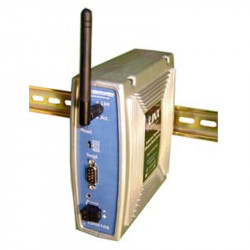
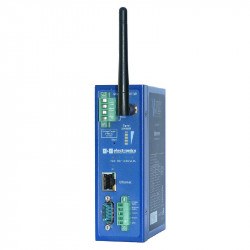
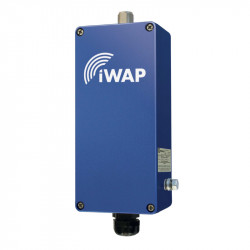
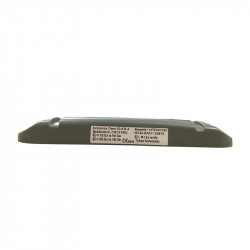
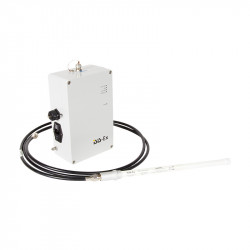
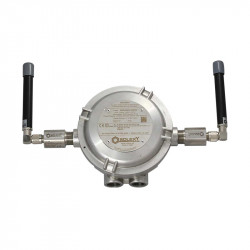
Deja un comentario